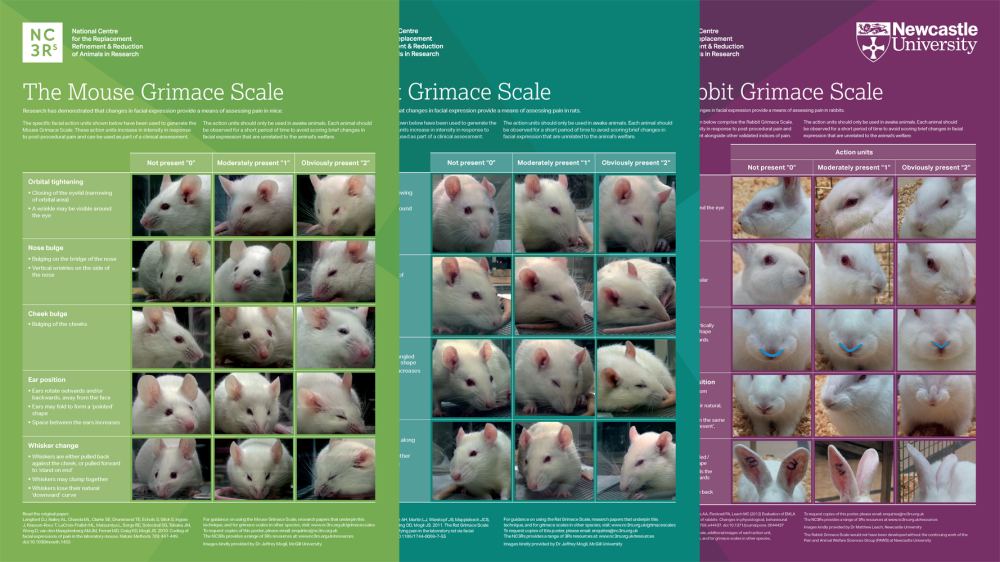Why were the grimace scales developed?
Effective alleviation of pain in laboratory animals depends on the ability to recognise pain and assess its severity. Traditional methods of pain assessment based on monitoring of behaviour and clinical signs (e.g. weight loss) are time consuming and can have other limitations (e.g. the signs observed may not be specific to pain).
Research by Dr Jeffrey Mogil and colleagues, McGill University, has demonstrated that changes in facial expression provide a reliable and rapid means of assessing pain in mice and rats. ‘Grimace scales’ have been developed for these species, based on changes in a number of ‘facial action units’, such as narrowing of the eyes (orbital tightening) or changes in the position and shape of the whiskers.
With funding from the NC3Rs, Dr Matthew Leach, Newcastle University, has demonstrated that these facial action units increase in intensity in response to post-procedural pain, and could therefore be used as part of a clinical assessment; he also developed a rabbit grimace scale. Grimace scales have since been developed for other species.
Where grimace scales are being used to assess pain in real time at the cage/pen side, each animal should be observed for a short period of time to avoid scoring brief changes in facial expression that are unrelated to the animal’s welfare. They should only be used with awake animals.
Original research papers
Langford DJ et al. (2010). Coding of facial expressions of pain in the laboratory mouse. Nature Methods 7(6): 447-449. doi:10.1038/nmeth.1455
Sotocinal SG et al. (2011). The Rat Grimace Scale: a partially automated method for quantifying pain in the laboratory rat via facial expressions. Molecular Pain 7: 55. doi:10.1186/1744-8069-7-55
Keating SCJ et al. (2012) Evaluation of EMLA cream for preventing pain during tattooing of rabbits: Changes in physiological, behavioural and facial expression responses. PLOS ONE 7(9): e44437. doi:10.1371/journal.pone.0044437

